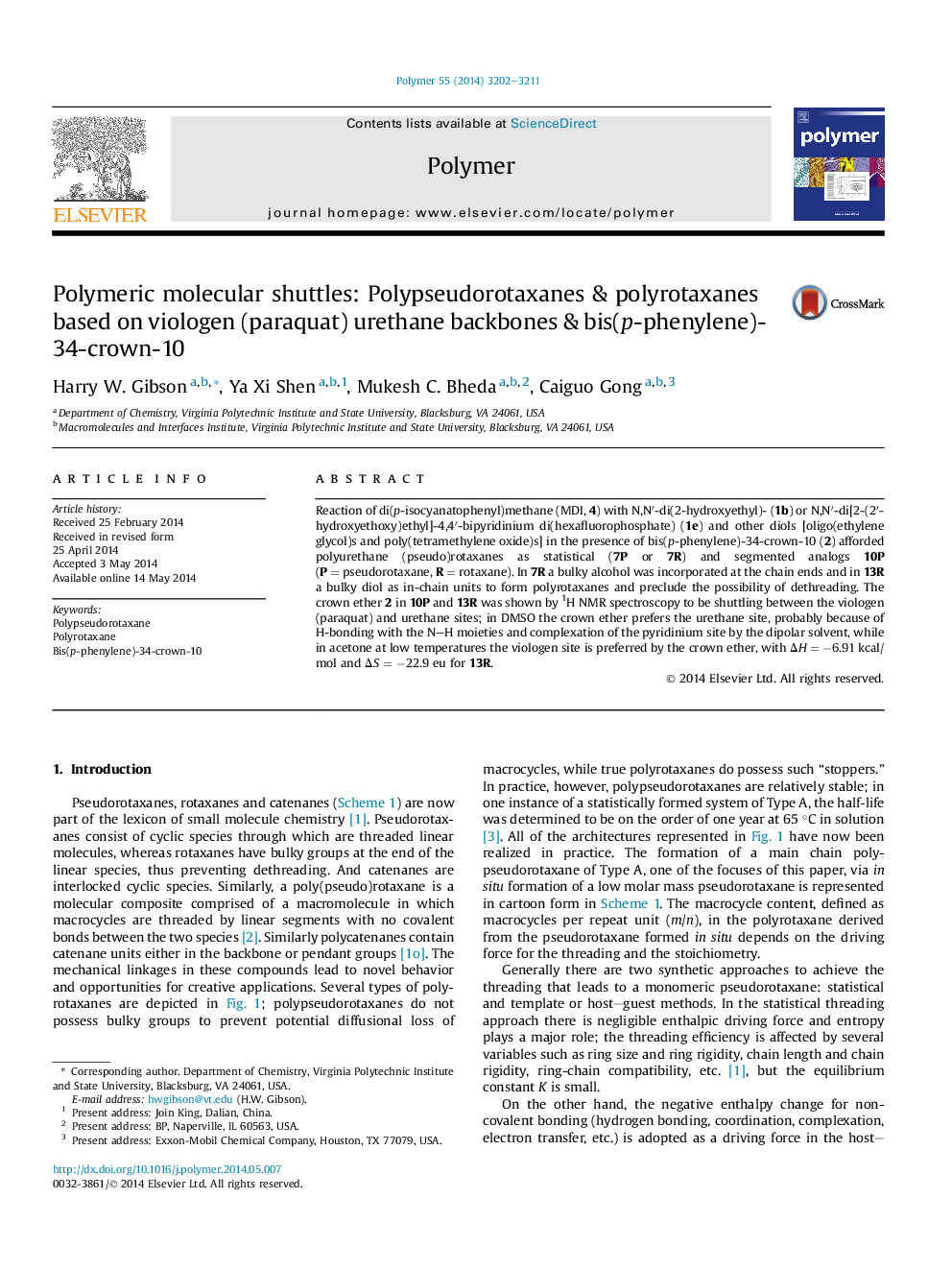| Article ID | Journal | Published Year | Pages | File Type |
|---|---|---|---|---|
| 5181231 | Polymer | 2014 | 10 Pages |
Reaction of di(p-isocyanatophenyl)methane (MDI, 4) with N,Nâ²-di(2-hydroxyethyl)- (1b) or N,Nâ²-di[2-(2â²-hydroxyethoxy)ethyl]-4,4â²-bipyridinium di(hexafluorophosphate) (1e) and other diols [oligo(ethylene glycol)s and poly(tetramethylene oxide)s] in the presence of bis(p-phenylene)-34-crown-10 (2) afforded polyurethane (pseudo)rotaxanes as statistical (7P or 7R) and segmented analogs 10P (PÂ =Â pseudorotaxane, RÂ =Â rotaxane). In 7R a bulky alcohol was incorporated at the chain ends and in 13R a bulky diol as in-chain units to form polyrotaxanes and preclude the possibility of dethreading. The crown ether 2 in 10P and 13R was shown by 1H NMR spectroscopy to be shuttling between the viologen (paraquat) and urethane sites; in DMSO the crown ether prefers the urethane site, probably because of H-bonding with the N-H moieties and complexation of the pyridinium site by the dipolar solvent, while in acetone at low temperatures the viologen site is preferred by the crown ether, with ÎHÂ =Â â6.91Â kcal/mol and ÎSÂ =Â â22.9Â eu for 13R.
Graphical abstractDownload full-size image
